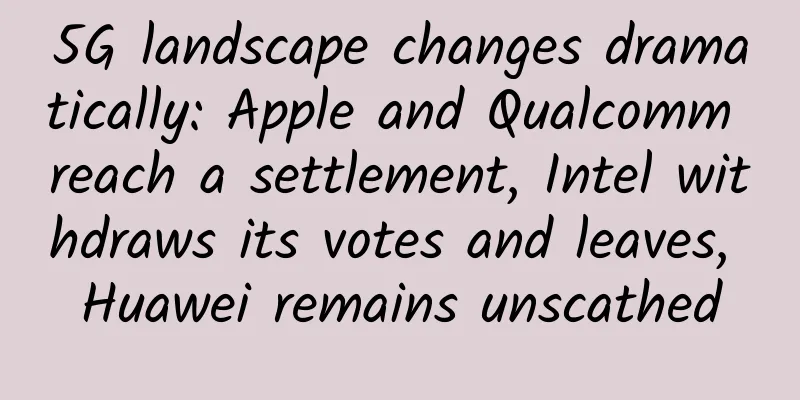Why haven’t white box vendors penetrated the large enterprise market? How can they change that?

|
According to IDC's latest survey data, global Ethernet switch sales in 2016 increased by 3% year-on-year to $24.4 billion. This is a very large market. IDC pointed out that Arista's share in the entire data center switching market increased from zero in 2010 to 9% in 2016, making it the biggest winner in the new Ethernet switch market. IDC data shows that Cisco's market share has dropped from 80% to 58%. Huawei, Juniper and HPE all have a place in this market. The white box network switch market accounts for less than 1% of the entire network switch market.
Back in 2013, there was a lot of talk in the industry about the disaggregation of the network switching market, that hardware would become commoditized, and that a new network software industry would emerge that would bring new opportunities for IT business leaders to create network infrastructure. Network disaggregation occurred, but it was concentrated in the hyperscale and large service provider markets. There were many options for buying network switches, running open or closed switch operating systems. Pure white box switching companies include Agema Systems, Edgecore Networks, Pica8, IP Infusion, Foxconn Technology, Accton Technology, Celestica, Quanta Computer, Centec, etc. Users can run proprietary switch operating systems from existing manufacturers such as Arista, Cisco, Pluribus, Extreme, Juniper, HPE, Dell, Nuage and Huawei on white box switches. Some providers also package hardware switches with commercial chips and open operating systems, and some companies focus on network software running on commercial hardware, such as Big Switch, Cumulus, SnapRoute, etc. Since users have so many choices, why are white boxes not widely adopted in the large enterprise market? For the ONUG community, most ONUG IT business leaders believe that the white box market (commercial silicon running an open switch operating system) is highly fragmented and unorganized, and therefore high risk. However, if the ecosystem of vendors demonstrates the capabilities they need, the barriers to entry for white boxes in the large enterprise market will be eliminated. The following are some high-risk factors: Difficulty Buying switch hardware from one company and using switch operating systems and other software functions such as monitoring, management, security, etc. from other companies is unacceptable to many IT business owners and operators. Their main concern is if they have the ability to build such a network infrastructure, and most importantly, how to achieve it on a large scale. Large enterprise IT departments have not yet invested in the skills to build and manage such an infrastructure. Take a data center as an example, with 1,000 switches from 10 to 20 hardware and software providers, all of which rely on each other to provide solutions. How to operate a data center? How difficult is it to identify faults and solve problems? Will a company's software update affect the entire system? What are the reference designs and best practices? How scalable is this model? Service and Support The white box market is best suited for service and support companies to solve the above problems. Dell provides service and support to its white box ecosystem partners. Companies like Red Hat can maintain version control, ensure reference design support, and provide best practice guidance. Without the service and support model of the white box market, large enterprises have limited chances of success. In addition, many IT leaders do not understand how to integrate white box solutions into existing network infrastructure. As an ONUG community member said: "I can buy a Wedge switch, but I can't integrate it into my infrastructure and service and support system." Company Outlook IT business leaders are used to buying technology from startups with good company prospects. Startups may do the technology well, or they may not do it well, or they may even be acquired. The same is true for white box switch startups, but IT business leaders need to consider the development prospects of key parts of their network infrastructure. While these barriers to entry are high, some, such as Big Switch, have found success in the large enterprise market thanks to their holistic approach to the network software stack, with a focus on monitoring plus cloud-based architectures. The network switch market will continue to develop, and mature market players such as Arista will continue to innovate their EOS software due to API access, container versions, and CloudVision for automating NetOps tasks. Cisco recently announced its cloud scale switche, which will provide high-performance and low-cost switches. Extreme has acquired several network switch companies in an effort to expand its market share, and Juniper has also seen significant growth in its share of the network switch market. |
<<: Mobile edge computing provides unlimited possibilities for 5G innovation
>>: Use what-if analysis to meet data center capacity needs
Recommend
5G application complex network security issues cannot be ignored
The commercial use of 5G has brought unlimited po...
Improving 4G resident ratio by adjusting RSRQ measurement parameters
Today, when mobile Internet 4G communication has ...
Talking about the "security gate" of Facebook and Google: the "cheese" and "traps" of SD-WAN
On September 28, hackers used Facebook's secu...
TripodCloud: Large bandwidth CN2 GIA line VPS hosting 18% discount starting at $59/year, optional large hard disk
TripodCloud is an early-established Chinese hosti...
The love-hate relationship between video surveillance networks and IPv6 in the era of the Internet of Things
Among the three major layers of the Internet of T...
Crazy 5G connectors, the next wave
5G is developing at an amazing speed The Ministry...
Have you already moved to SDN network?
Today's networks are constantly changing and ...
DogYun May Day discount: 100 yuan/month discount for independent servers, 30% discount for dynamic cloud, 20% discount for classic cloud, top up 100 yuan and get 10 yuan free
DogYun has launched a promotion during the May Da...
Essential for IoT experts: Network protocol stack LwIP (I)
need: In IoT devices, the TCP/IP network protocol...
Talk about the difference between continuous integration, continuous delivery, and continuous deployment
CI needs to have the following: Comprehensive aut...
Wi-Fi CERTIFIED Vantage adds support for the latest Wi-Fi features
Recently, Wi-Fi Alliance launched new features fo...
Will the laser in a broken optical fiber harm us?
Optical fiber is an important component of commun...
IPv6 neighbor discovery, address duplication detection, and router discovery mechanisms, learn about them in one minute
1. IPv6 Basics IPv6 (Internet Protocol Version 6)...
Tencent Cloud Light 1C2G3M is only 253 yuan (or 83 yuan/year) for three years, shared by new and old users
Tencent Cloud's Double 11 event is still vali...
UUUVPS Promotion: Hong Kong CN2 line VPS annual payment starts from 89 yuan, US San Jose CN2 line VPS annual payment starts from 99 yuan
UUUVPS (Sanyou Cloud)'s 3rd anniversary promo...









